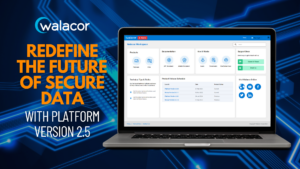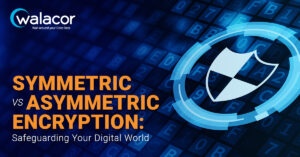Blockchain is a buzzword that has been making headlines in recent years. Blockchain technology is one of the most revolutionary innovations of the 21st century, potentially changing how we exchange value, store data, and even govern ourselves. But what exactly is it, and how does it work? Let’s explore the concept of blockchain, its applications, and its potential impact on various industries.
What is Blockchain?
At its most basic level, blockchain is a decentralized digital ledger that records transactions and stores data securely and transparently. Becoming mainstream as the underlying technology for Bitcoin, its potential applications have proven to extend far beyond cryptocurrencies.
One of Blockchain’s key features is Decentralization. Unlike traditional systems that are controlled and operated by a single entity, blockchain is distributed across a network of nodes that all maintain a copy of the ledger. This means there is no single point of failure or control, making it a highly resilient and tamper-proof system.
Each block in the blockchain contains a set of transactions that are verified and added to the chain through a consensus mechanism. With Bitcoin, this mechanism is known as “proof-of-work,” with nodes competing to solve complex puzzles in order to add a block to the chain. Once a new block is added, it cannot be altered or deleted without consensus from the entire network, creating a highly secure and immutable record of all transactions.
How Does Blockchain Work?
At the lowest level, blockchain uses cryptography to secure and verify transactions. Each user on the network has a wallet (like an account other users can send transactions to) and a set of keys (a secret code used to verify the user’s identity when they make a transaction). Users who want to make a transaction create a digital signature using their private key. This signature is then broadcast to the network along with the transaction details. The other nodes on the network verify the signature using the user’s public key, and if it checks out, the transaction is added to the block.
Each block contains a unique code, known as a hash, that is generated based on the contents of the block. The hash is like a digital fingerprint on the block and is used to ensure that the block cannot be altered. If someone tries to change the contents of a block, the hash will no longer match, and the other nodes on the network will reject it. Once a block is added to the chain, it is visible to all the other nodes on the network, creating a transparent, decentralized system where everyone can see all transactions that have occurred.
Benefits of Blockchain
- Decentralization – As we’ve already touched on, one of the most significant benefits of blockchain is its decentralized nature. Unlike traditional centralized systems, blockchain operates on a peer-to-peer network where a network of nodes verifies transactions. This decentralization ensures that there is no single point of failure, making the system less vulnerable to hacking and data breaches.
- Transparency – Because every transaction is recorded in a public ledger, anyone can view the details of a transaction, with crypto this includes the sender, receiver, and amount transferred. This makes it ideal for applications where transparency and accountability are important, such as the financial industry.
- Security – Blockchain technology uses cryptographic algorithms to ensure the security of data. Transactions are secured with a digital signature; once recorded on the blockchain, they cannot be altered. This makes it extremely difficult for malicious actors to tamper with the data, ensuring the system’s integrity is maintained.
- Efficiency – Blockchain eliminates the need for intermediaries such as banks, brokers, or other third parties, reducing transaction costs and increasing efficiency. Transactions can be completed in real-time, and the automated nature ensures there are no delays or errors.
- Traceability – Blockchain provides a transparent and immutable record of transactions, allowing for easy traceability of assets. Supply Chain Management has proven to be a good use case, businesses can use a blockchain to track the production, movement and the sale of goods through complex multiple party workflows.
- Automation Potential – Smart Contracts are transparent and auditable processes and controls that can be deployed on the blockchain. This provides visibility, trust and consistency to ensure all transactions are done in a “business as usual” manner.
Blockchain Challenges
Despite its potential, blockchain technology is not without its challenges.
- Scalability – As the size of the network and the number of transactions on the blockchain increases, the number of transactions that can be processed per second becomes a limiting factor. This can result in slower transaction times and higher fees, making it less practical for large-scale use cases, and has led to the development of systems like proof-of-stake and layer 2 chains, which are designed to increase efficiency and scalability.
- Interoperability – With many different blockchains and protocols, there is no common standard for how blockchains communicate with each other. This can be a limiting factor that can make it difficult to transfer assets between networks.
- Regulation – Because blockchain operates outside of traditional financial and legal frameworks, regulating and enforcing laws around its use can be difficult. This has led to concerns about money laundering, fraud, and other criminal activities that could be facilitated by blockchain.
- Security risks – While blockchain is considered secure, there are still risks associated with the technology. The immutability of the ledger can make it difficult to correct errors or reverse fraudulent transactions, and attackers can exploit smart contract vulnerabilities.
Potential Applications
While blockchain technology gained mainstream visibility in cryptocurrencies, the potential applications for blockchain are far-reaching. A few examples include:
- Finance – Blockchain has numerous potential use cases in the finance industry. It can be used for cross-border payments, remittances, and digital identity verification. It can also enable the creation of decentralized financial systems, such as peer-to-peer lending platforms and decentralized exchanges.
- Supply Chain Management – Blockchain can help create a transparent and secure supply chain, where every step of the supply chain – from acquiring raw materials to moving the final products – is recorded on the ledger. Using blockchain in this manner can help prevent fraud and counterfeiting, reduce waste, and improve efficiency.
- Healthcare – With its tamper-proof, immutable state, blockchain can securely store and share medical records, improving patient privacy and allowing for more efficient information-sharing between healthcare providers. It can also be used for clinical trials, drug supply chain management, and medical research.
- Non-Fungible Tokens (NFTs) – Being able to represent and prove ownership of real world and digital assets in a public and transparent way. Providing immutable ownership, ensuring authenticity and enabling royalties are some of the capabilities blockchain adds.
- Voting Systems – Blockchain can create more secure and transparent voting systems. Enabling online voting that is resistant to fraud and hacking and can increase voter participation. By recording each vote on the blockchain, it becomes much more difficult for anyone to manipulate the results, ensuring the accuracy of election results.
- Real Estate & MortgageTech – Blockchain helps to create a secure, transparent system for buying and selling property and maintaining mortgage records. It can be used to record property titles, track ownership, and automate property transactions. This can reduce the need for intermediaries, such as real estate agents and lawyers, streamline processes, decrease costs and reduce the potential for fraud.
Blockchain is a revolutionary technology with the potential to transform a wide range of industries. By creating a secure, transparent, and decentralized system for recording transactions, the use of blockchain can improve efficiency, reduce fraud, and increase accountability. While there are challenges to overcome, the potential uses of blockchain are too significant to ignore. As more industries begin to explore the potential of blockchain, we can expect to see new and innovative use cases emerge. Whether it’s creating a more transparent supply chain, improving access to financial services, or revolutionizing the way we think about AI, blockchain has the potential to shape the world as we know it.



